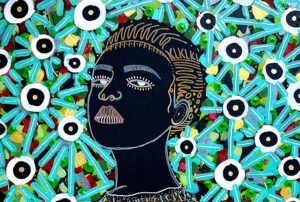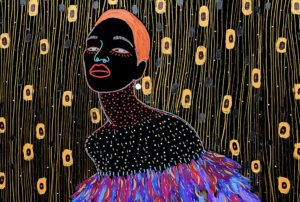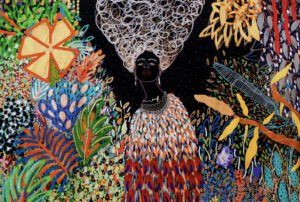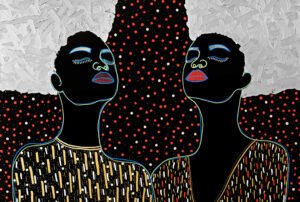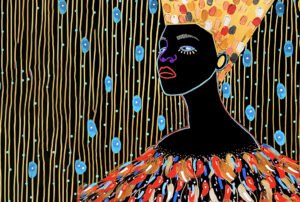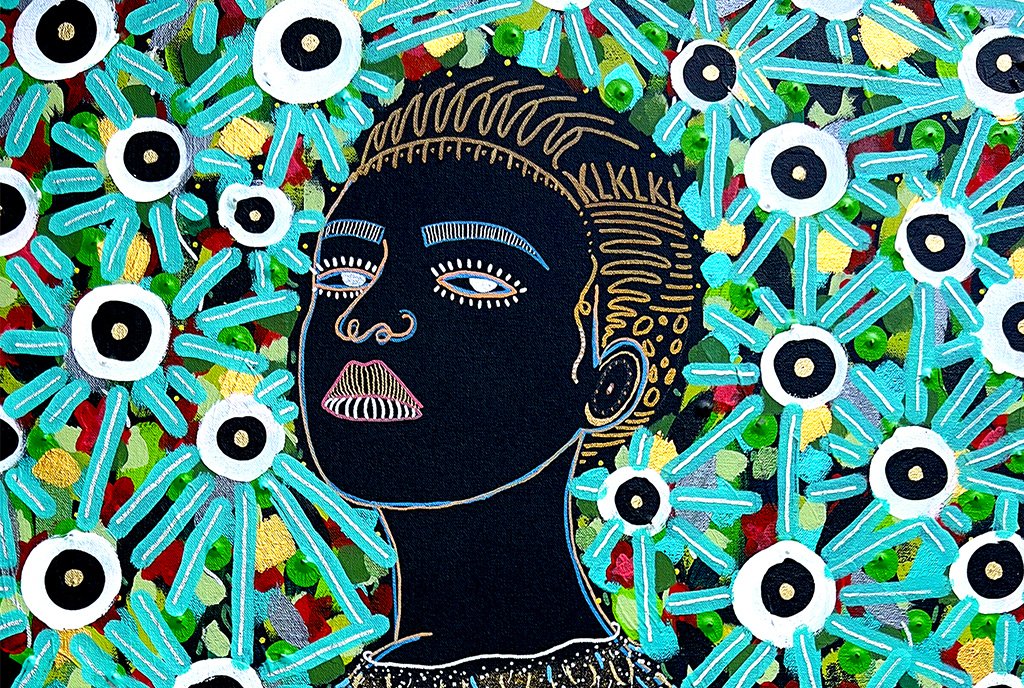
Welcome to Tiny Spark, a podcast of the Nonprofit Quarterly. We focus on what is required to build a more just society—in matters of race, health, the environment, and the economy. I’m Amy Costello.
Afghanistan has been on our minds in recent weeks and months. Regular listeners to our podcast know that we’ve frequently covered the topic of women in conflict zones, and so, when we heard that the US would withdraw from Afghanistan, we, like so many people across the globe, were concerned about the fate of women and girls there.
Out of that concern, we spoke to Zarqa Yaftali. She is director of the Women and Children Legal Research Foundation and had been involved in Afghanistan’s peace process. We spoke to her a couple of months ago, before the Taliban took over Kabul. Even so, the fears Yaftali described to us were well-founded. She told us she was very worried about the fate of women in Afghanistan ahead of the US withdrawal.
Zarqa Yaftali: Unfortunately, when the US government announced their withdrawal from Afghanistan, the security threat against women became very high. In the last four months, we lost a large number of women that were civil society activists, women’s rights activists, and women from the media. And it is not finished. We are not living in a secure environment nowadays; it is not clear what will happen tomorrow, or what will happen next week, or what will happen next month in Afghanistan.
What would end up happening in the next month in Afghanistan seemed to confirm so many of Yaftali’s fears. To hear more from her, and other women in conflict zones, you can listen to our recent podcast, entitled “The Women Forgotten in the Wars We Started,” and we’ll have a link to that episode on our website, tinyspark.org.
Well, a few weeks after speaking to Yaftali, we spoke to another woman with deep ties to Afghanistan: Mariam Ghani. She’s an artist, writer and filmmaker based in Brooklyn, and she’s the daughter of a Lebanese mother and her father is Ashraf Ghani, the president of Afghanistan who fled Kabul by helicopter in mid-August as the Taliban took control of the capital. It’s important to note that we also recorded our interview with Mariam Ghani prior to the fall of Kabul, and at that time, she had agreed to speak with us to talk about her work as an artist, writer, and filmmaker.
To produce her documentary, What We Left Unfinished, Mariam worked extensively with the National Film Archive in Afghanistan for years. As an artist, she has been interested in archives of all kinds, and in particular an idea called “radical archiving,” and that’s an idea we’re going to be exploring in this podcast.
And when I think about the idea of radical archiving, I have a lot of questions like “what makes an archive radical?” “Who decides what’s in an archive and what gets left out?” “How do those explicit choices inform our understanding of history and social movements?” “When does archiving in itself become a radical act?”
I asked Mariam how archiving can become a radical gesture, and how she became interested in this kind of work.
Mariam Ghani: Well, you know, that came out of some of the work I’d been doing in Afghanistan with the National Film Archive. They had, of course, very famously managed to preserve their entire negative archive all through the Taliban era when film was outlawed. That’s a radical act of archiving. And we are, of course, speaking in a moment when I’m extremely worried about the survival of Afghan archives once again, because we’re entering a moment of renewed iconoclasm and renewed danger for everyone who identifies as a journalist, an artist, a poet, a writer, a maker of images. And those are all people who are being targeted in Afghanistan at this moment once again.
And of course, Afghanistan is not the only place where radical archivists have managed to carry out their work over the years. Back in 2014, Mariam helped to cohost a radical archives conference at New York University. She was surprised by the number of people who said they wanted to participate, including a number of people who considered themselves to be “radical librarians.”
Ghani: I just found that so beautiful and hopeful that there are so many people in public libraries and institutional archives all across this country who think of themselves as radical librarians and radical archivists and are really trying to find all of these new ways to look at the materials that they hold, and look at the spaces of which they are custodians, and to try to activate them in new ways and make them accessible in new ways to new audiences.
But Mariam notes that there is a risk when trying to archive and synthesize large, complex issues: there can be a tendency to focus in on individual narratives.
Ghani: In general, people crave stories and characters and want to think about larger politics through individual stories and individual characters. There’s always a desire for a narrative with a shape, with a beginning, middle, and end.
Chitra Ganesh: Yeah, yeah. And the elevation of the individual is not commensurate to the justice of a group.
That’s Chitra Ganesh. She’s also a visual artist based in New York. Chitra has collaborated artistically with Mariam over the course of many years. I spoke to both of them about their work as radical archivists, and how both are drawn to the fascinating minutiae that can make up an archive. But Mariam says they are both drawn to a broader challenge, too: getting audiences to pay attention to widespread injustices.
Ghani: It is more difficult to craft artwork or films or books around systemic issues and structural patterns. That is actually a more difficult task, and it’s also more difficult to get people to look at them and watch them and enjoy them—quote-unquote, “enjoy them,” right?
Costello: And it seems to me, Mariam, that you both have been involved in such a project with Index of the Disappeared, which you’ve both been collaborating on since 2004. Can either of you just tell me a little bit about this project and what brought you to it?
Ganesh: In 2004, we were both invited to participate in an exhibition, the theme of which was considering issues that had been either neglected or overlooked in the national politics and the electoral discourse of the upcoming election and the Republican National Convention that was in New York. And for both of us, we arrived at, separately, this issue of detention, deportation, the post-9/11 climate of surveillance, of xenophobia, of special registration, and how there was what we came to see as a kind of a parallel narrative of disappearance that was sort of a shadow narrative to the larger story of people whose lives were affected by the tragedies of September 11th. And we realized that this parallel narrative of disappearance was something that was not really being apprehended, not legible, not visible, and we wanted to start to think about why this was and how this was.
Costello: And to somebody who’s never seen Index of the Disappeared, how would you describe it visually?
Ganesh: We describe it as a mobile archive, and also as a platform. The projects that the Index of the Disappeared has done can look like anything from site-specific installation with multiple components, including images, documents, video. It can also look like an archive, which we have—the actual physical archive is housed in Mariam’s studio currently—and it has also taken the form of ephemera: political ephemera from the anti-Iraq war movement, from the organizing that was going on in the wake of September 11th in immigrant communities and for immigrant rights advocacy. So, it looks like a large collection of elements that are both visual and textual.
Ghani: And I also want to just say to be precise, but it’s also an archive of the effects of US military intelligence interventions around the world. So, it’s not an exclusively American archive, except in the sense of how American imperialism in the last 20 years has really affected the rest of the world.
Ganesh: And even including sort of the histories prior to that, and ways in which American military intervention has been ongoing, is something that we had come to look at, some of those historical connections.
Ghani: Indeed, we looked at prehistories of 9/11 in a number of different ways.
Costello: Mariam, you have said—about the Index of the Disappeared, you said, “We look for clues in the language of the text, for moments when the register of speech breaks unexpectedly from official to unofficial, and a moment of humanity becomes visible, like a flash that illuminates the gears of an inhumane system.” That was so…I mean, both beautiful and poignant and important to me, and I’m wondering, can you think of some examples of these kinds of flashes, these little moments that you notice that revealed something important to you?
Ghani: Sure, there’s two that I always think of. So, one of them is in the report on the death of Gul Rahman at the Salt Pit in Afghanistan, the CIA black site in Afghanistan, and the site manager who was responsible for Gul Rahman’s death from overexposure to cold, when he was being questioned about this death. This, of course, is in a CIA internal investigation, the 2004 CIA Inspector General report, which is just, like, seas of black redaction, with a few phrases that surfaced from this sea of black. And one of them was this question that this guy asks when he’s being hauled on the carpet about this death, and he said, “Well, how cold is cold?” And that one has always, always stuck with me.
Costello: What about that question stayed with you? Tell me more about that.
Ghani: I mean, that was one where it just really spoke to how little, how little he cared. And it had this very strange kind of philosophical sound to it, and at the same time it was like a completely empty question. I mean, “how cold is cold” is meaningless; it’s a meaningless question, right?
Ganesh: Well, yeah, and I think what Mariam is pointing to is also this kind of dissonance between, or—I don’t even know if it’s dissonance. It’s almost…it’s either a synergy or a dissonance between this idea of talking about the coldness as related to temperature, you know, and his own coldness in relation to suffering, to another human’s suffering. So, I think that there are some snippets of thought and phrase like that, that feel like they kind of got peeled off the official record, that really stay with you and really resonate. You know, when Mariam was talking, I was also thinking about, one of these really powerful moments for me was visualizing and feeling like the imprisonment, the confinement, the detention that people experienced, and the torture of being in that black site, by repeatedly encountering people talking about not knowing whether it was night or day, not knowing which direction Mecca was in, how to pray, and these kinds of things that we collected, and that we began to think about.
Ghani: Yeah. The other one that has stuck with me for a long, long time is from the internal army investigation into the 2002 deaths of Dilawar and Habibullah at Bagram. There’s a section in that where one of the MPs—the military policemen—who was in the battalion that’s officially held responsible for these deaths says, you know, we thought it was really funny that every time we hit him, he would say, “Allah.” (This is about Dilawar.) And that’s why everyone in the battalion, you know, went and hit him, just to hear him say “Allah.” And that just killed me. It’s just in there without any comment, really. He was struck a hundred times, and he was struck a hundred times because they thought it was hilarious that he cried out to his god every time they hit him. Yeah.
Costello: It’s very…very, very troubling.
Ghani: Yeah. Yeah.
Costello: Chitra, were you about to say something?
Sign up for our free newsletters
Subscribe to NPQ's newsletters to have our top stories delivered directly to your inbox.
By signing up, you agree to our privacy policy and terms of use, and to receive messages from NPQ and our partners.
Ganesh: I was just…no, I was just thinking about some of the other testimony, even some of these ruptures that you find in the official testimony, like what Mariam was talking about. But the secondhand description of someone being waterboarded, which is something that we came to when we were looking, when we were doing some of the work on black sites for the Dhaka Art Summit, in terms of black sites and torture. And the phrase was, “His body limp, with bubbles rising from his full and open mouth.” So, the idea that there is this much potency and violence and subjective testimony within all this official record, I think, is part of our work of thinking about what has been erased or overlooked and bringing that to the fore.
Costello: I want to dig a little deeper here, because as I’m listening to you both, it’s occurring to me that we are indeed facing so many pressing social problems. Conflict, globally and domestically. I need not list the—you know, a pandemic. I mean, one could, I could keep listing things until the end of this interview, and I’m not going to do that. But this is what I do want to do, which is to talk to you a little bit both more about the power of specificity. It’s kind of what you’ve both been talking about in your work with these very specific examples that come up in the torture that we’ve been inflicting upon people, and how these little moments, these little quotes that we can lift out of the archive to remind us of the visceral things that are happening to actual people within these larger systems that I think can get lost on us in this day and age where we’re just literally facing a tidal wave of news, and it just kind of comes at us without necessarily a pause. And I feel like the conversation that we’re having now, and in the work that you both do, demands of the viewer to pause and to look at the minutiae and what it all means.
And Mariam, I want to start with you, because I was looking at your Instagram and, you know, we haven’t mentioned that your father is the president of Afghanistan. And I also understand, from the reading I’ve done about you, that’s not something that you necessarily like to speak about at length. But you did nod to him, I think, in a recent Instagram post, so I want to ask you about it. You posted a piece from a collaboration you did with your father in 2011, a series called Afghanistan: A Lexicon, and on Instagram, two days ago, you said that this was a list of things lost in Afghanistan over the past century, and it’s styled as an encyclopedia entry, and it’s accompanied by this stark black-and-white visual that you describe as a starkly silhouetted window opening in a ruined building. And I found your entry here so powerful, because of its simplicity and specificity, and I want to read it now. It’s entitled Loss.
“Over the past century, many things have been lost in Afghanistan: battles, wars, soldiers, standards, ground, money, advantages, generations, blood, hearing, sight, limbs, lives, livelihoods, land, dreams, dreamers, ideas, ideals, innocence, friends…” (This is hard to read.) “…friendships, parents, children, childhoods, schools, teachers, homes, villages, fields, forests, rivers, roads, bridges, dams, electricity, cities, monuments, paintings, poems, places, earrings, coins, keys, suitcases, maps, plans, plots, ways, means, sanity, reason, levity, proportion, judgment, balance, love, hope.” And at the end, it says, “Sometimes what was lost can be recovered. But more often, the lost stays lost.”
View this post on Instagram
Can you tell me about that entry in particular? I’m very interested in it.
Ghani: Well, it’s basically a prose poem. In general, in Afghanistan: A Lexicon, the entries that are sort of purely poetic are the ones that I wrote. And, yeah, I posted that on Sunday because I was having an existential freak-out about Afghanistan on Sunday. And I was thinking back to this particular entry, and this particular text, and I looked at it again and I thought, “Well, this really does summarize my current mood.” I couldn’t think of anything that I could write now that would encapsulate my feelings better than what I had written then. It speaks to this cyclical nature of conflict in Afghanistan, and it speaks to the ways in which what’s happening now, you know, for Afghans, you really echo what happened in the ’90s and the feeling of having been essentially abandoned to the Taliban by the international community. So…yeah. I don’t think I can say anything more about that.
Costello: Chitra?
Ganesh: Yes.
Costello: I was looking at your Instagram, too, and you were…there’s a video there when you talk about Black Lives Matter and the signage that you saw during those protests, made out of cardboard, and there was something that really resonated and struck you about kind of the signage that you saw during those protests. Can you talk to me a little bit about what you observed and what it said to you?
Ganesh: This kind of movement building is something that’s been on my mind for a while, both in terms of Black Lives Matter and the issues of racial justice, but also the kind of visual language of protest that I feel has evolved over the past several years around the world as many, many countries, citizens, and groups grapple with authoritarian power and its effects on people. And so the idea of, what is the visual language of protest, what are those signifiers and how do they impact and affect us, was already on my mind.
And I think that something that I really loved about the protests that we experienced here in New York, and around the US, and actually in solidarity around the world in the wake of the murder of George Floyd, was the urgency and immediacy of the actions that were taken. So, seeing that there was such an urgency and a directness to communicate, to challenge power, to speak truth to power, and how the visual elements, or the visual material of that, was Sharpie and cardboard markers. You know, it was just about grabbing something that was around, whatever it was. And I think I was trying to think about that kind of urgency, and the material of the urgency, and the way in which any anything, any detritus, could be taken up and transformed into a powerful tool to communicate in a collective way about the urgency of these issues and of the ongoing state-sponsored violence against black bodies in the United States: the accompanying xenophobia; the way in which these intersections result in the disproportionate killing of Black trans women in particular, and of Brown and Black femme bodies. This was something that was really interesting to me. And I think that one of the ways in which it echoes or resonates with the evolution of the Index of the Disappeared is thinking about how there might be a larger public or even governmental, statist narrative about what’s happening and the kind of concurrent narratives that are getting overlooked. So, I was thinking about that, and I was thinking about the way in which certain kinds of issues around queer visibility, queer life, queer justice intersected and collided with police brutality and with this idea of a dominant and a compliant narrative.
Costello: Is there anything that either of you wanted to say that you didn’t get a chance to say?
Ghani: Yes. I would like to just backtrack a bit and talk about this idea of the kind of small bits of significance that we extract from the archive, because really the work of the Index is threefold. Part of it is finding those moments of rupture and extracting these small bits of significance. But the other part of it is, really, you’re framing those within a kind of constellation of other bits of significance and making these connections that allow people who have not spent a significant portion of their lives reading declassified documents to understand why these little pieces are significant. And then the third piece of it is actually really pointing out the gaps in the record and tracing the ways in which all of this censorship and redaction and data blackouts are part of a broader shift to secrecy that actually allows for these disappearances, and deportations, and renditions, and detentions—and also drone strikes—on a scale that is actually unprecedented.
Ganesh: I would also say that these kinds of—I don’t know what we call them; we call them so many things. But the ruptures in the records, these moments of poetry, all of these, and also the work that we’ve done around the idea of archiving around dissenting and other communities, feels very relevant and important for me now, even in looking at the way in which, for example, journalists around the world have been targeted over the last several years, and looking at particularly the horrifying situation that’s also been unfolding in India, which is very, very connected and relevant and brutal to those who are trying to put out narratives that might challenge the current government, which you, I’m sure you have also been following, Amy—
Costello: Yes, yes, and—
Ganesh: —as a journalist.
Costello: Yes, I have. And Chitra, I’m…it’s also another terrible situation, and my heart goes out to both of you and to your families.
Ganesh: Yeah, and how regular everyday people who are not even in these professions get involved and get sort of swept up in the dragnet of this. I’m thinking of a young man in India who posted on Twitter that he needed oxygen because he wasn’t getting it from the government, and he had a FIR [First Information Report] filed against him, which is like a police report, with an intent to arrest—
Costello: Wow.
Ganesh: —for saying something seditious. You know, this is just a person who needed oxygen. This is not a journalist, like, uncovering a plot. I mean…anyway, yeah.
Costello: Somehow, it brings me back to “how cold is cold.”
Ganesh: Yeah.
Ghani: Yeah.
Costello: Well, Chitra Ganesh, visual artist based in Brooklyn, and Mariam Ghani, artist, writer, filmmaker, teacher. I’m so grateful and humbled by this conversation, and I thank you both for your work and for making time for me today. Thank you.
Ganesh: Thank you so much for this invitation. It’s really delightful to speak with you and to be part of Tiny Spark for the moment.
Ghani: Thank you so much for having us.
This article is a transcript of the Tiny Spark podcast.
Cover Image: Photo by Michael Dziedzic on Unsplash
ADDITIONAL RESOURCES:
- Ronak K. Kapadia, “On the Afterlives of US Forever Wars: Insurgent Aesthetics as a Queer Practice of Freedom,” Post45, September 11, 2020.
- Liz Robbins, “Mariam Ghani, a Brooklyn Artist Whose Father Leads Afghanistan,” The New York Times, February 20, 2015.
- Regina Corallo, “The human dimension of archives,” Scope, November 2015.
- Tausif Noor, “The Visual Vocabulary of Chitra Ganesh: Femininity, Sexuality, and Abjection in Ganesh’s Visual Art,” Inquiries Journal, 2013.
- Tiny Spark Podcast: “The Women Forgotten in the Wars We Started,” August 5, 2021.
- On Instagram: Chitra Ganesh & Mariam Ghani



